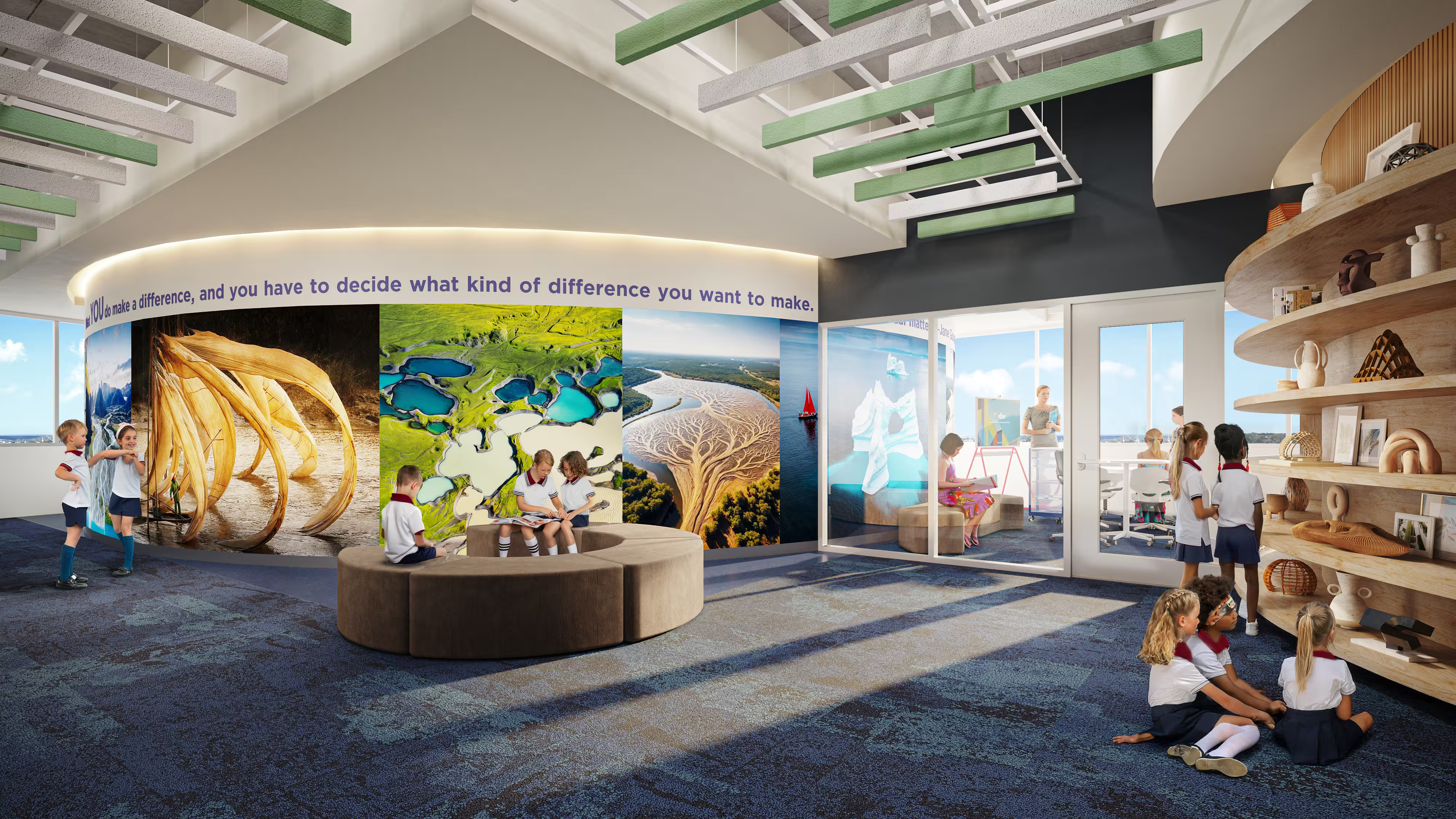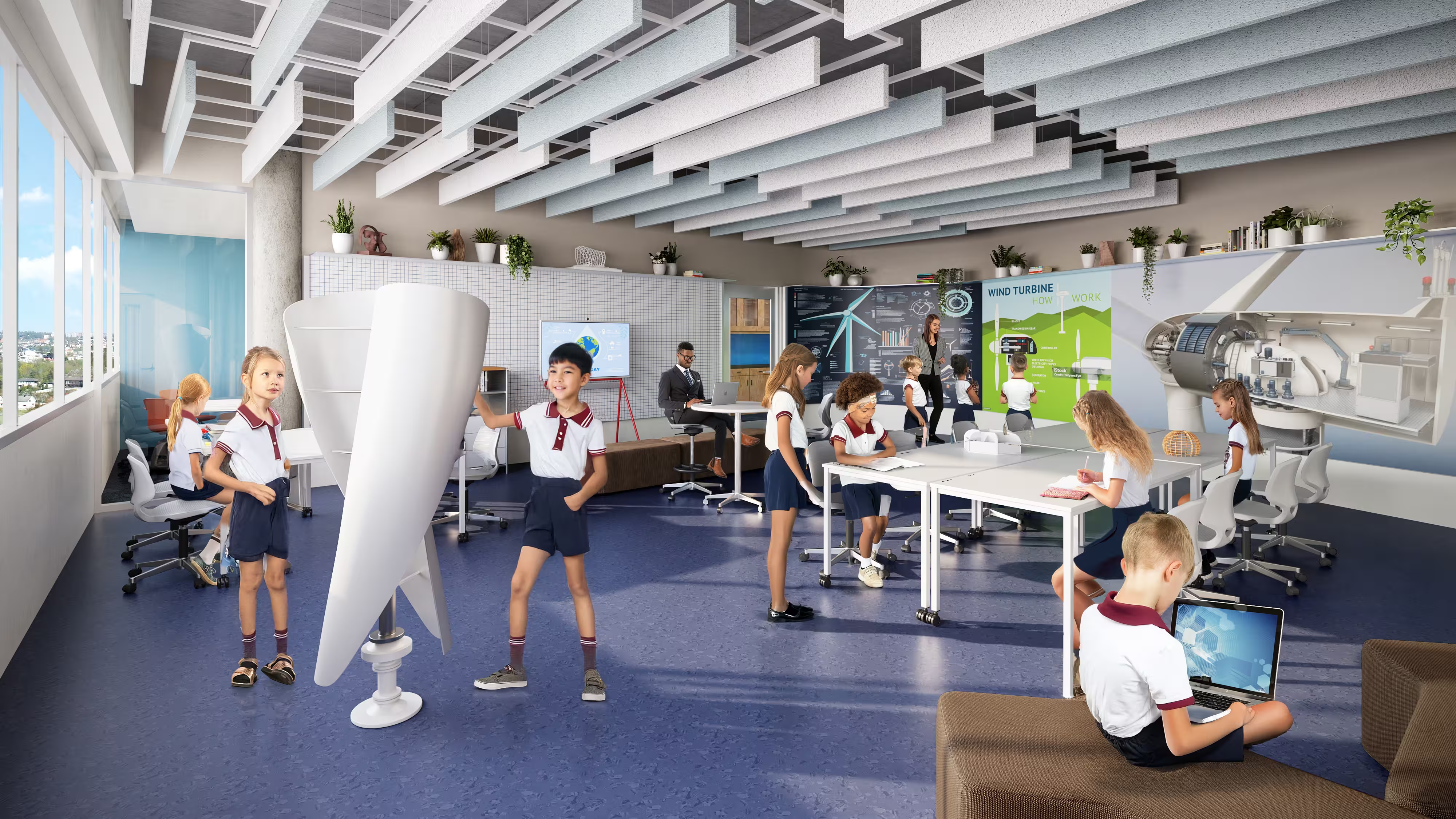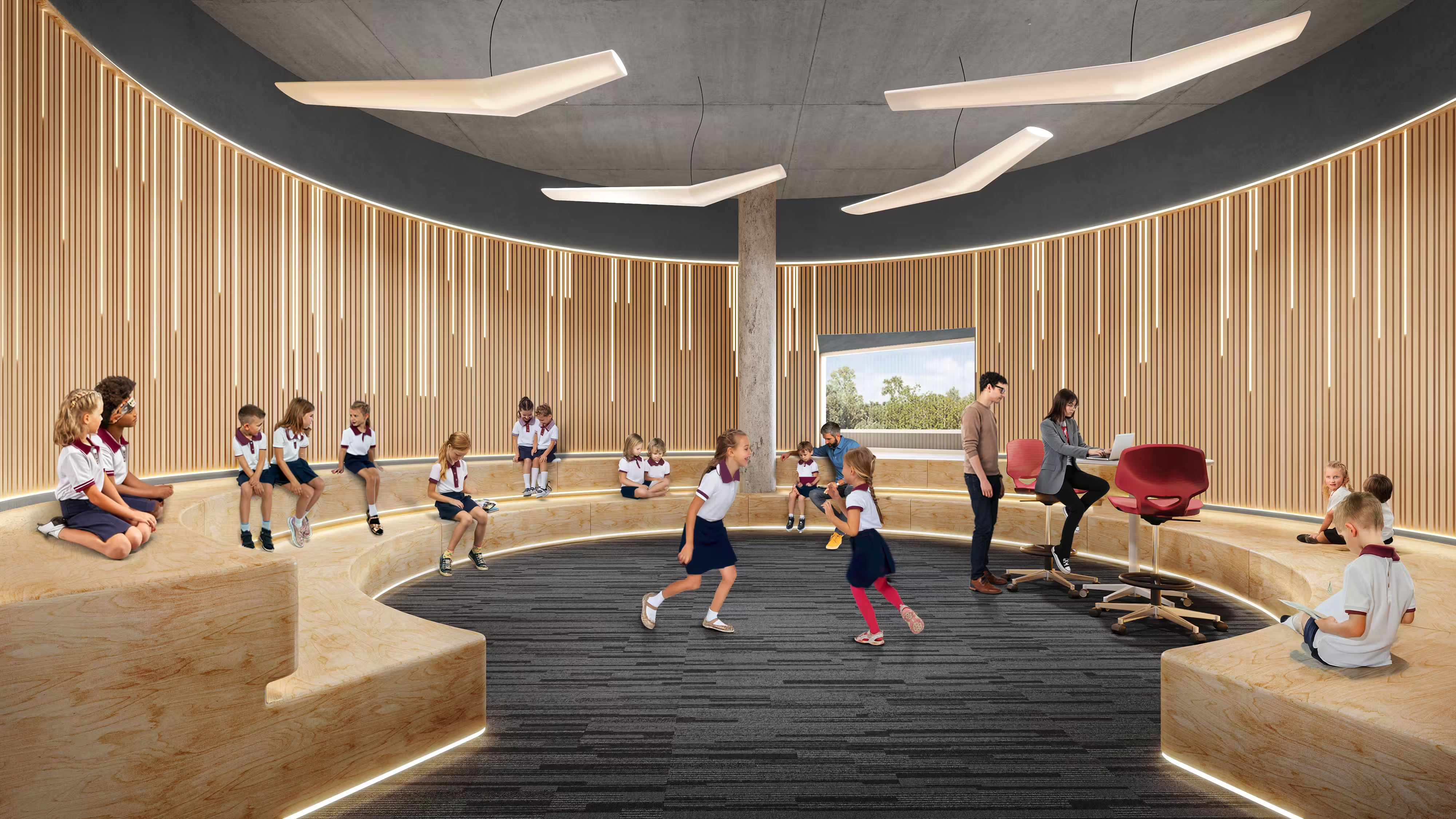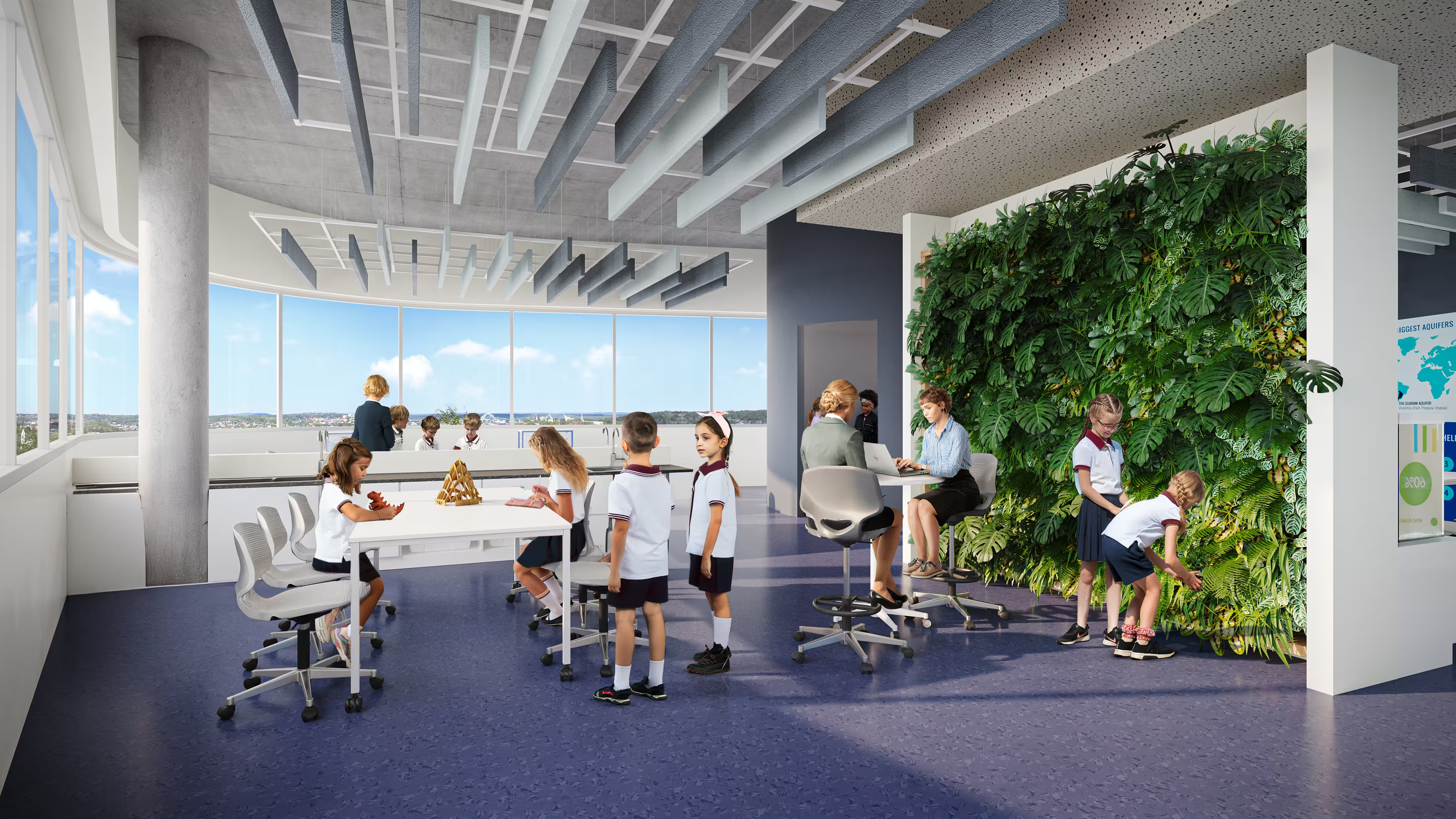Where Ideas Take Shape
In the Visual Thinking Lab, students work together to solve problems, sketching ideas on large whiteboard walls. Math problem feel less like solo struggles than a shared challenge.
From Ideas to Impact
At The Collider, our innovation hub, students apply what they learn to real-world challenges—from clean water to sustainability. Working in teams, they connect with experts, build prototypes, and begin to see how their ideas can create meaningful change.
Big Thinking, Big Building
Designed for middle and upper school students, The Transformer is where big ideas become real. Here, students take on large-scale design projects with heavy duty tools—building engines, complex machines, and prototypes that challenge them to think like engineers. It’s a space for bold experimentation and the kind of making that prepares students for real-world innovation.



